Lincoln Hall may refer to one of the following:

Marycrest College Historic District is located on a bluff overlooking the West End of Davenport, Iowa, United States. The district encompasses the campus of Marycrest College, which was a small, private collegiate institution. The school became Teikyo Marycrest University and finally Marycrest International University after affiliating with a private educational consortium during the 1990s. The school closed in 2002 because of financial shortcomings. The campus has been listed on the Davenport Register of Historic Properties and on the National Register of Historic Places since 2004. At the time of its nomination, the historic district consisted of 13 resources, including six contributing buildings and five non-contributing buildings. Two of the buildings were already individually listed on the National Register.
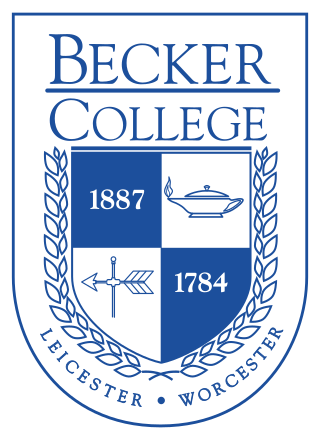
Becker College was a private college in Worcester and Leicester, Massachusetts. Becker College traced its history from the union of two Massachusetts educational institutions—one founded in 1784 and the other in 1887. The college closed at the end of the 2020–21 academic year.
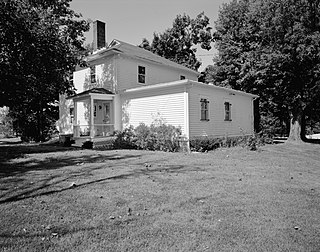
The Whitney Young Birthplace and Museum is a historic house museum on the campus of the former Lincoln Institute in rural Shelby County, Kentucky near Shelbyville, Kentucky. It was the birthplace and childhood home of Whitney M. Young, Jr. (1921–71), an American civil rights leader. Young became prominent for his leadership of the National Urban League between 1961 and 1971. The house is now managed by the Lincoln Foundation, a successor to the Lincoln Institute, as a museum to its and Young's history. The house appears on the National Register of Historic Places and was designated as a National Historic Landmark in 1984.
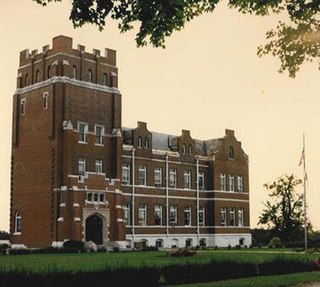
The Lincoln Institute was an all-black boarding high school in Shelby County, Kentucky from 1912 to 1966.

Justin Morrill Hall, known almost exclusively as Morrill Hall, is an academic building of Cornell University on its Ithaca, New York campus. As of 2009 it houses the Departments of Romance Studies, Russian Literature, and Linguistics. The building is named in honor of Justin Smith Morrill, who as Senator from Vermont was the primary proponent of the Morrill Land-Grant Colleges Act of 1862 which greatly assisted the founding of Cornell University. Morrill Hall was declared a National Historic Landmark in 1965.

The Main Building of Vassar College is the oldest surviving building on its campus in Poughkeepsie, New York, and the center of academic life. It was built by James Renwick, Jr. in the Second Empire style in 1861, the second building in the history of what was one of America's first women's colleges. It is one of the earliest, largest, and most important examples of Second Empire architecture in the United States and is a National Historic Landmark for its architecture and educational significance. At the time of its completion, the structure contained the most interior space of any building in the United States, and housed the entire college, including dormitories, libraries, classrooms, and dining halls. Currently, the first and second floors house campus administration while the remaining three house student rooms.
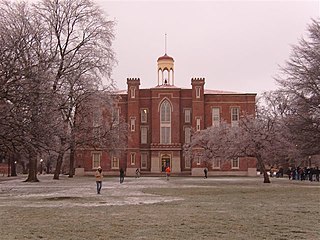
Old Main is the oldest building on the campus of Knox College in Galesburg, Illinois. Completed in 1857, it is a distinctive Gothic Tudor design of Swedish architect Charles Ulricson. It was designated a National Historic Landmark in 1961 as one of the few surviving sites to host one of the famous 1858 Lincoln–Douglas debates. The building underwent a major restoration in the 1930s, which modernized its interior and restored its exterior.
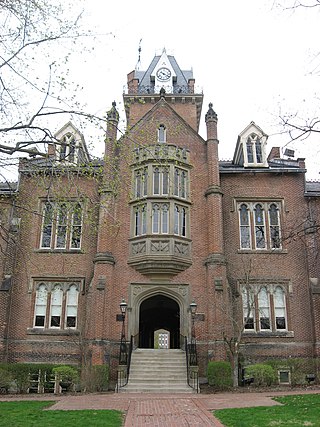
Old Main, Bethany College is a historic building group on the Bethany College campus in Bethany, West Virginia.

Swayne Hall is the oldest building on the campus of Talladega College in Talladega, Talladega County, Alabama, United States. It was built in 1857 by slaves for use by a Baptist men's college. It was designated a National Historic Landmark in 1974 for Talladega College's role as one of the few historically black colleges and universities to maintain a liberal arts focus. It was the only liberal arts college open to black Americans in Alabama for many years.
This is an incomplete list of historic properties and districts at United States colleges and universities that are listed on the National Register of Historic Places (NRHP). This includes National Historic Landmarks (NHLs) and other National Register of Historic Places listings. It includes listings at current and former educational institutions.

The Yard is one of the main quadrangles on the campus of Howard University in Northwest Washington, DC. The Yard is the principal open space at the northern end of the academic portion of the campus, flanked by nine academic buildings. It is the site of a variety of campus gatherings, most notably for its annual Homecoming festivities, known as "Yardfest". The quadrangle and three buildings, Andrew Rankin Memorial Chapel, Frederick Douglass Memorial Hall, and Founders Library, are a listed National Historic Landmark, important for their role in the advancement of civil rights in education during the 20th century.
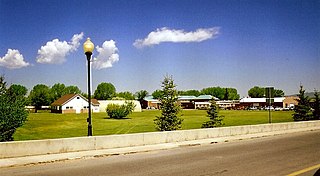
The Wyoming State Hospital, once known as the Wyoming State Insane Asylum, is located in Evanston, Wyoming, United States. The historic district occupies the oldest portion of the grounds and includes fifteen contributing buildings, including the main administrative building, staff and patient dormitories, staff apartments and houses, a cafeteria and other buildings, many of which were designed by Cheyenne, Wyoming architect William Dubois. Established in 1887, the historic buildings span the period 1907-1948. At one point it was common for new hall additions to be named after the counties in Wyoming. The recent addition of Aspen, Cottonwood, and Evergreen halls do not follow this trend.

McMillan Hall is a building on the campus of Washington & Jefferson College in Washington, Pennsylvania, United States. Built in 1793, it is the only surviving building from Washington Academy. It is the eighth-oldest academic building in the United States that is still in use for its original academic purpose and is the oldest surviving college building west of the Allegheny Mountains.
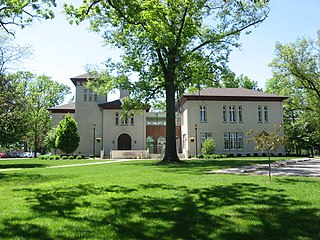
The Urbana College Historic Buildings are a historic district on the campus of Urbana University in Urbana, Ohio, United States. Composed of three nineteenth-century buildings, the district includes the oldest structures on the university's campus.

The Drake University Campus Historic District is located in Des Moines, Iowa, United States. The historic district contains six buildings. Five of the buildings are collegiate buildings on the Drake University campus and one is a church. The period of significance is from when the university was founded in 1881 to the end of the presidency of Hill M. Bell in 1918. The historic district has been listed on the National Register of Historic Places since 1988. It is part of the Drake University and Related Properties in Des Moines, Iowa, 1881—1918 MPS.

The Baldwin-Wallace College South Campus Historic District is an area of land on the south end of the Baldwin Wallace University campus. When the district was established, the school was Baldwin-Wallace College. BW is a four-year private, coeducation, liberal arts college in Berea, Ohio, United States. The school was founded in 1845 as Baldwin Institute by Methodists settlers. Eventually the school merged with nearby German Wallace College in 1913 to become Baldwin-Wallace College, which adopted the present name in 2012. Several buildings since its founding have been established on the National Register of Historic Places, establishing this area as the Baldwin-Wallace College South Campus Historic District.

The Old Classroom Building, Union College, located on College Street in Barbourville, Kentucky, is a historic building of Union College which was built in 1907. It was listed on the National Register of Historic Places in 1975.

University Hall is the main academic building at the Ohio State University in Columbus, Ohio. The building houses classrooms for several of the university's colleges and includes a museum on the ground floor.



















